- Established 1982 -HOME: www.hiltonpond.org
THIS WEEK at HILTON POND Subscribe for free to our award-winning nature newsletter (Back to Preceding Week; on to Next Week) |
HILTON POND SUNSETS
All text, maps, charts & photos © Hilton Pond Center Sunset over Hilton Pond (above), 01 May 2021. MAY BIRD ARRIVALS, Although springtime birders rightfully "o-o-h and a-h-h" over the brilliant colors of male Wood Warblers, at Hilton Pond Center we are just as enthusiastic with the appearance of female parulids that are often overlooked. Their plumage sometimes resembles that of male conspecifics; more often they have muted colors, lack prominent field marks of males, and/or in a few cases look nothing like their prospective mates.
All text, maps, charts & photos © Hilton Pond Center A female Common Yellowthroat (COYE, above) we caught and banded on 11 May is a good example of how female warblers can be as eye-pleasing as males. This particular COYE was a second-year bird, but her yellow gorget was just about as bright as that of a male. All she lacked was the jet black mask of her masculine counterpart. Common Yellowthroats--with 388 banded during 40 years at the Center--are our fourth-most-common warbler, surpassed only by American Redstarts and Yellow-rumped and Magnolia Warblers. COYE have a vast range, breeding in nearly all the Canadian Provinces, in every contiguous U.S. state, and in the high mountains of central Mexico. Some occur year-around on the coast in Southeastern and Gulf States, while others migrate to spend cold-weather months in Central America and the western Caribbean. COYE nest across South Carolina, but we've never found evidence for local breeding at Hilton Pond.
All text, maps, charts & photos © Hilton Pond Center Along with our photo of that colorful female Common Yellowthroat we're offering the image just above of a second-year male COYE banded on 14 May at the Center. The obvious difference, of course, is the male's jet-black mask, bordered by an irregular band of pale gray. (In our experience, this gray edging is wider and more uniform in shape in older birds.) Common Yellowthroats--not to be confused with Yellow-throated Warblers--are one of our smaller Wood Warblers and fall under that category of parulids that have neither wing bars nor tail spots. Males are sometimes mistaken for Yellow-breasted Chats that are nearly two times larger and are no longer considered to be warblers--having been placed (at least by some taxonomists and the American Ornithologists' Union . . . or maybe the American Ornithology Society) into their very own private family, the Icteriidae (not to be confused with the Icteridae, with one lower case "i," which is the family for blackbirds and their kin--and don't you just love taxonomy). Anyway, Common Yellowthroats are still in the Parulidae--at least for now--so don't be confused by their appearance or by taxonomic changes.
All text, maps, charts & photos © Hilton Pond Center Several other Wood Warblers arrived and were banded at Hilton Pond Center in May, including some colorful males like the Northern Parula (NOPA) above. This particular bird might be the most intensely plumaged member of his species we've ever handled--a likely sign he was an older adult. Parulas are one of just a few warblers that apparently breed locally; we've never found a nest here but have captured females with active incubation patches. Of 99 NOPA banded at the Center, 35% have been in spring.
All text, maps, charts & photos © Hilton Pond Center We have even better evidence for local breeding by Hooded Warblers (second-year male above) since we've caught adult females with incubation patches AND recent fledglings. This species nests across South Carolina, more commonly in the Lowcountry. Females typically have a paler hood and bib, but older ones may resemble males. We've banded 53 HOWA locally since 1982.
All text, maps, charts & photos © Hilton Pond Center Unlike the previous two warblers--and despite their southern-sounding name--Magnolia Warblers (MAWA, male above) nest nowhere near Hilton Pond.
All text, maps, charts & photos © Hilton Pond Center Breast streaking like that of male Magnolia Warblers is also present in the Canada Warbler (CAWA), although restricted to a necklace in the latter; the line is much darker in adult male CAWA like the one above. Canada Warblers are more deserving of their name than Magnolia Warblers, actually breeding in Canada and even down the Appalachians as far as North Carolina's Highcountry. We seldom see CAWA at Hilton Pond, with just 33 banded since 1982 (almost evenly split between spring and fall migration).
All text, maps, charts & photos © Hilton Pond Center Although the previous five photos depict male birds with bright yellow plumage, not all warblers we caught in May at the Center were quite so showy. Take for example, the parulid just above--one frequently described as "confusing" when seen in fall migration. But note the field marks: A pair of white wing bars, white undertail coverts, streaked back, light line through the eye, and--most important--buffy yellow legs and feet. Together, these point at female Blackpoll Warbler (BLWA); her mate (below, banded in a previous year) looks very different and superficially resembles a Black-and-white Warbler. Blackpolls are true northern nesters, with a breeding range in boreal forests well north of the U.S.-Canadian border. Interestingly, of 130 BLWA banded at Hilton Pond in 40 years, 92% have come through in spring.
All text, maps, charts & photos © Hilton Pond Center For many months at Hilton Pond Center we’ve been working on harvesting firewood from the giant Southern Red Oak that toppled a year ago Easter due to old age and fungal rot at its base. The amount of dead-fall was daunting, so we’ve made many brush piles around the property to accommodate millions of old leaves and limbs and twigs too small to burn. On a fairly regular basis we’ve run our quiet cordless electric Greenworks chainsaw and a much-noisier gas-powered hydraulic log splitter, splitting 22” lengths and stacking what will end up being several cords of firewood. The evening of 19 May we went out to split a little and stopped dead in our tracks when we saw something "out of place." Straight ahead on the trail was the slightly sinuous shape of a reptile with prominent hourglass markings: Copperhead!
All text, maps, charts & photos © Hilton Pond Center We stopped, estimated the snake’s length at about 18” and turned abruptly, sprinting back to the old farmhouse for a camera--in hopes the serpent would stay put. Just used for a few bird photos, our camera was sitting on the back deck, so we grabbed it and rushed back to find the Copperhead hadn’t moved. We only had a macro lens at the moment and got as close as safely possible before firing off a few flash exposures of the snake with head raised. A second return to the farmhouse for a telephoto lens was fruitless; by then, the snake had slithered off into a nearby brush pile. This is only the fourth Copperhead record for the Center and the first in perhaps two decades. One of those—a big mama almost three times the length of today’s youngster—we accidentally stepped on as she stretched across a trail down close to the pond. We kept walking and the snake just lay there as we pivoted to look at what had been under a flip-flop a few seconds earlier. In another instance, son Garrison—who was four or five at the time—spied a snake crawling across the yard and authoritatively called out “Dad, I think we have a Copperhead!” (We're happy both our boys took to nature-watching and species identification at a young age!) Copperheads, Agkistrodon contortrix, are the least dangerous of all the pit vipers in the Carolinas and are encountered most often. Relatively lethargic, they usually must be provoked into biting; even then, their venom is seldom strong enough or in large enough a dose to cause death in an adult human. Albeit non-fatal, the bite may be quite painful, makes one sick, can take a long time to heal, and is worth avoiding. (If bitten by a venomous snake, avoid panic and immediately call 911 for help and instructions.)
All text, maps, charts & photos © Hilton Pond Center Although the Copperhead’s hourglass makings are good camouflage among fallen leaves on the forest floor, our “Snake of the Day” stood out like a sore thumb against dirt and grass on a well-maintained trail. This individual was less coppery-colored than some we have seen, but there was a little hint of green near its tail tip—the sign of a younger Copperhead. Curiously, newborn snakelings--about 6”-8” long--have brilliant neon-green tails (photo above), so our latest sighting was probably born last year. (NOTE: Like other pit vipers, Copperhead mothers give live birth.)
All text, maps, charts & photos © Hilton Pond Center Pit vipers all have cat-like vertical-slit pupils, as shown in our file photo above; note also the heat-sensitive "pit" between the eye and nostril. Copperheads are primarily nocturnal or crepuscular (active at dawn or dusk), so despite relative abundance they are seldom encountered. There are probably several living around Hilton Pond right now, dining on White-footed Mice, Pine Voles, herps, and large insects. We don’t worry about their presence but are mindful where we step when out on our trails. Copperheads lived here long before the Hiltons, and we're satisfied to share brush piles with them at our little Piedmont enclave. All text, maps, charts & photos © Hilton Pond Center
All text, maps, charts & photos © Hilton Pond Center On 25 May we were working on an extension to the back deck of the old farmhouse at Hilton Pond Center when we noticed a wad of pale green at the top of one of the support posts. There was no doubt about its identity as a recently expupated Luna Moth, whose wings were slowly unfolding after being cramped inside the cocoon where a caterpillar had metamorphosed this spring. With its distinctive color, prominent eye spots, hindwing "tails," and large size--a wingspan of 4.5 to 7"--this species, Actias luna, may be the most easily identified moth in eastern North America. Luna Moths are in the Saturniidae (Giant Silk Moth Family), which includes the large Polyphemous, Io, Regal, and Imperial Moths. All have big caterpillars (2"-4" in length) and in the Carolinas may produce more than one brood per year. Luna Moth larvae aren’t too picky about diet, feeding on leaves of Common Persimmon, Black Walnut, Pecan, Sweetgum, and various hickories and sumacs. Adults have vestigial mouthparts and no digestive system and live only a week or so after expupation. In that short span female Luna Moths exude strong phereomones detectable up to several miles by feathery antennae of males that fly upwind toward the odor at night to mate. (The moth in our photo is likely a female, based on smaller antenna size.) Once abundant, essentially harmless Luna Moths are imperiled by loss of hardwood foresty habitat, overuse of pesticides by farmers and homeowners, and--ironically--by predation from tiny parasitic wasps introduced to control larvae of invasive Gypsy Moths. Bright security lights also interfere with Luna Moth navigation and make them easier prey for bats and night-feeding birds. (Note that all these dangers are the result of human activity.)
All text, maps, charts & photos © Hilton Pond Center The granddaughters came to visit Hilton Pond on 29 May, eager to help Pap Hilton deploy mist nets and catch birds. Most of the girls' overnighters have been during winter when we only ran traps, so McKinley Ballard Hilton (age 10, above center) and Hadley Reid Hilton (7) were anxious to see if a few warm-weather birds might come our way. They weren't disappointed as we captured, examined, and banded a nice variety that broadened their knowledge. The 12 House Finches (ten recent fledglings) were no surprise, nor were three Downy Woodpeckers (above), two Carolina Wrens, a female American Redstart, and a Chipping Sparrow--plus the girls' perpetual favorites: Three new Ruby-throated Hummingbirds, and two recaptures.
All text, maps, charts & photos © Hilton Pond Center A Great Crested Flycatcher was also a treat (it's Gram Hilton's spark bird) but the girls' "New Bird of the Day" was an oddly colored red-and-yellow Summer Tanager (SUTA), recently arrived from the Neotropics. When we showed the girls a photo of a bright red adult male SUTA in their field guide, they correctly deduced the one in-hand was an immature male that hadn't yet acquired full adult plumage--what banders call a "second-year" bird that must have hatched last year, perhaps near Hilton Pond. When Summer Tanagers fledge both males and females are overall yellow in color, with young males often having much brighter (even orangey) undertail coverts. Occasionally hatch-year males acquire a few red feathers here on the North American breeding grounds, but most wait until they reach their "winter" home among old-growth forests in the Neotropics. Some young male SUTA then return north with full red plumage, but quite a few retain at least some yellow feathers and exhibit what we call a "calico" appearance. Such was the case with today's bi-colored second-year male that had a completely yellow tail (see photo below) and other yellow feathers scattered across his body.
All text, maps, charts & photos © Hilton Pond Center The girls recorded the tanager's measurements and double-checked his new band number while remarking this individual had the rather large bill shown in our photos. (See also the red mulberry stains on his mandibles!) They noticed heavy wear on his old yellow feathers that already have lots of miles and months on them. This young male SUTA, by the way, was our 202nd banded at Hilton Pond Center since 1982. To collect a final piece of data about the tanager we sent the granddaughters off on a net check while we secretly blew on the bird's belly to see his cloacal status. (The girls might still be a little young for the avian sex talk.) Sure enough, even though the Summer Tanager appeared to be "immature," he had a prominent, swollen cloacal protuberance--a sure sign he was making sperm and fully capable of fertilizing eggs. A bright, fully red older male might get a female's attention more quickly, but we doubt she would turn down copulation from a persistent, healthy calico male like the one the Hilton granddaughters observed and released in late May. All text, maps, charts & photos © Hilton Pond Center
All text, maps, charts & photos © Hilton Pond Center The Hilton granddaughters stayed around for 30 May--historically Hilton Pond Center's most productive spring day as far as our Ruby-throated Hummingbird research is concerned. Beginning in 1985, we've captured 61 new RTHU on this date and recaptured 53 returning hummers banded in previous years for a total of 114. (Closest to that is 29 May with 79 total--38 new, 41 old--but most years our spring banding days yield far fewer.) For obvious reasons, we try not to be away and always operate our mist nets on 30 May each year. Sure enough, this year on the 30th we banded a male and a female ruby-throat and recaptured four returns seen this year for this first time--including a now-second-year male, an after-second-year female banded last year, and a third-year female from 2019.
All text, maps, charts & photos © Hilton Pond Center Of special interest, however, was another old female RTHU (above) that is very well-traveled, having been banded (#L42890) as a recent fledgling in August 2016 and captured every year since at Hilton Pond. Thus, she's made that Neotropical trip down and back ten times! If she's been going as far as Costa Rica, that's at least 16,000 total miles--yet she comes right back each spring to the very same backyard near York, South Carolina. Talk about site fidelity! And talk about longevity, too! This female is now in her SIXTH year at Hilton Pond, and during the last five of those she undoubtedly has been a local breeder producing at least two chicks per year, more if she double- or triple-brooded--possibly 20 or more offspring! (NOTE: In 38 years of hummer banding at the Center we've had RTHU six years or older only 20 times, our oldest being eight years; ALL were females.) Incidentally, although we tell folks female Ruby-throated Hummingbirds usually have white throats, the gorgets of these older females may show one or more dark spots and/or gray streaking like our sixth-year bird (see photo above). However, do NOT assume all ruby-throats with gray-streaked throats are old females; young males often exhibit that characteristic. Yes, that six-year-old ruby-throat was quite a catch, but wait! It was indeed a splendid Memorial Day 2021 weekend at Hilton Pond Center, with granddaughters on hand to help us monitor mist nets and band birds on the 29th and 30th, after which they headed home. On 31 May we deployed nets alone--still flush over the recapture of the previous day's old hummer. Little did we know that after lunch another RTHU would overshadow our sixth-year bird. The 31st was a slow morning for banding, but in early afternoon things picked up slightly with the capture of a female Northern Cardinal, a Red-eyed Vireo, and five recently fledged Carolina Chickadees--very likely siblings that had never seen a mist net. (They were a lively quintet.) Shortly after that we spied an even smaller bird in a nearby net and could tell it was a hummingbird that lacked the red gorget of an adult male.
All text, maps, charts & photos © Hilton Pond Center We quickly extricated this newest hummer (above) and saw she wore a band like the one we caught the day before; we soon noted the number was from an entirely different sequence: #H81279. We recognized this as an old band and were delighted when we checked the records to find we had also handled this individual in 2020, 2019, 2018, 2017, and 2016 . . . AND when we banded her in 2015 as after-hatch-year bird!. Lo and behold, this hummer was now after-SEVENTH-year, meaning she was in AT LEAST her eighth year of existence AND two (or more) years older than the previous day's six-year-old recapture! This Ruby-throated Hummingbird was remarkable for us in that in 38 years of study she is one of the four oldest of her species at Hilton Pond, along with two other after-7th-year females and our "Methuselah bird"--an 8th-year female we caught every year from 2006-2013. To our knowledge, the oldest known RTHU was nine years old, so our four birds were homing in on the record. Since she's still hale and hearty, this latest recapture still has a chance at making it to or past the nine-year mark. The "elderly" RTHU was unusual in that her throat was still essentially white (see photo). As noted, older females often bear a dark spot or two or have gray streaking. Another cool thing about the image above is the bander's hand reveals the actual size of a Ruby-throated Hummingbird. Imagine being only as big as a human thumb and being able to fly from Hilton Pond to Central America--and back--over and over and over again for at least eight years! C'est impossible, but they do it! All text, maps, charts & photos © Hilton Pond Center POSTSCRIPT: Starting with the first New River Birding and Nature Festival in Fayette County WV, Bill Hilton Jr. (executive director of Hilton Pond Center) All text, maps, charts & photos © Hilton Pond Center HILTON POND SUNSETS "Never trust a person too lazy to get up for sunrise
All text, maps, charts & photos © Hilton Pond Center Sunset over Hilton Pond (above), 25 May 2021. Photoshop image post-processing for this page employs
Checks also can be sent to Hilton Pond Center at: All contributions are tax-deductible on your Don't forget to scroll down for Nature Notes & Photos, |
|---|
|
"This Week at Hilton Pond" is written and photographed by Dr. Bill Hilton Jr., executive director of Hilton Pond Center for Piedmont Natural History
|
|
|
Please refer "This Week at Hilton Pond" to others by clicking on this button: |
|

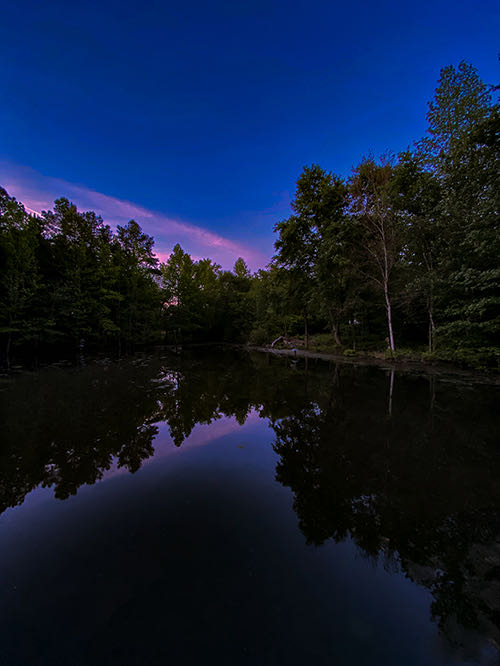
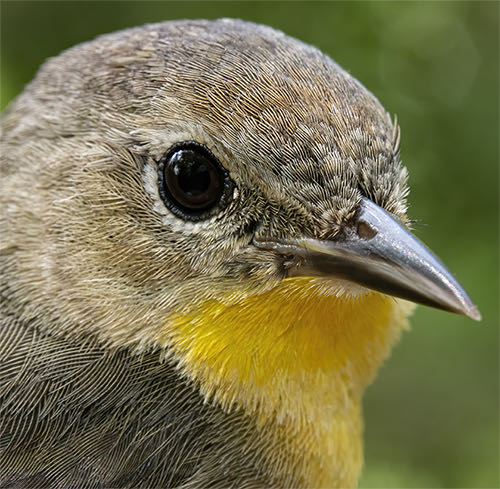
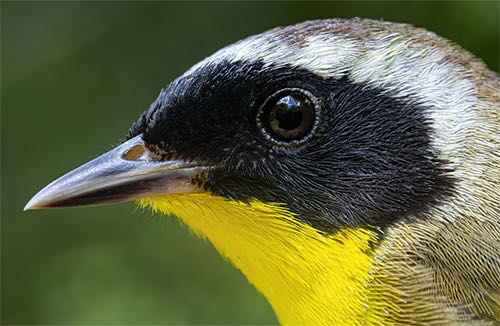
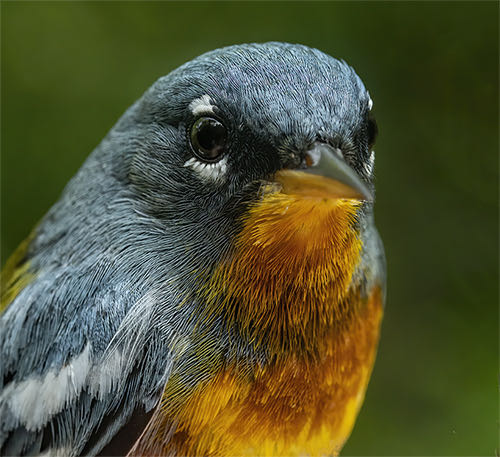
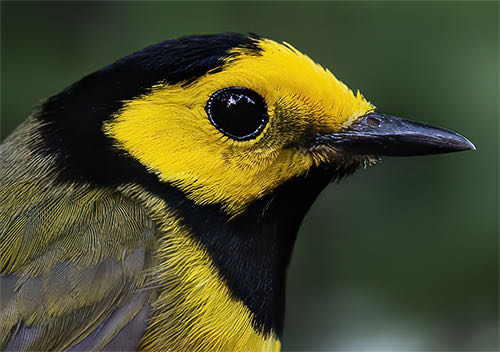
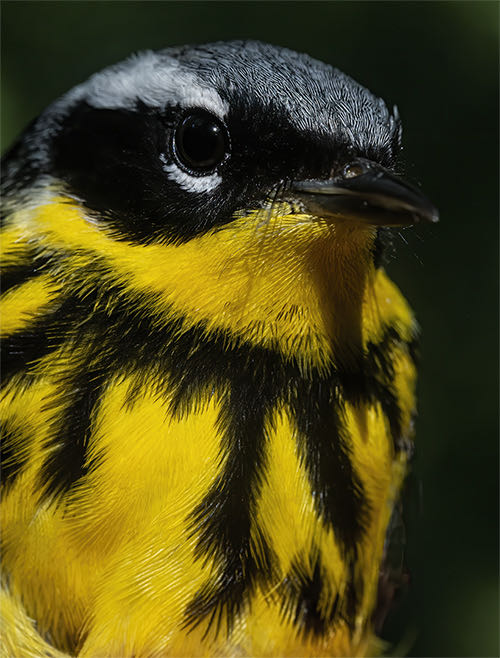
 They are pass-through migrants that appear each spring and end up primarily in New England, the Great Lakes States, and across the border into most of Canada. MAWA take their name from early ornithologist Alexander Wilson who collected one from a Mississippi magnolia tree during spring migration, unaware the species was headed north. Wilson got most of the field marks correct in his original painting at right--including the dark crown and face, yellow rump, and diagnostic white band in the tail--but somehow managed to miss the heavy black breast streaking of the adult male
They are pass-through migrants that appear each spring and end up primarily in New England, the Great Lakes States, and across the border into most of Canada. MAWA take their name from early ornithologist Alexander Wilson who collected one from a Mississippi magnolia tree during spring migration, unaware the species was headed north. Wilson got most of the field marks correct in his original painting at right--including the dark crown and face, yellow rump, and diagnostic white band in the tail--but somehow managed to miss the heavy black breast streaking of the adult male 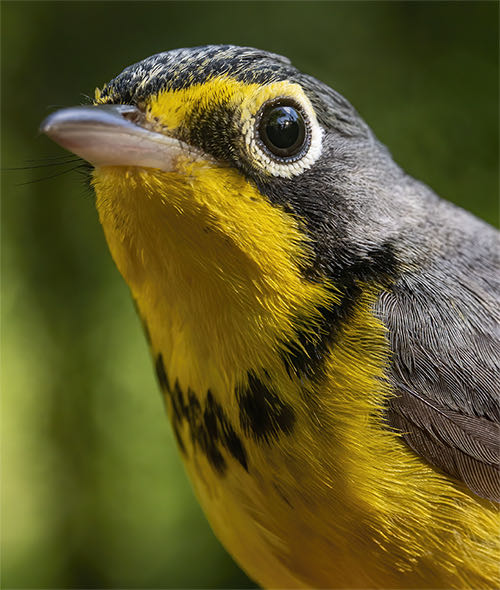
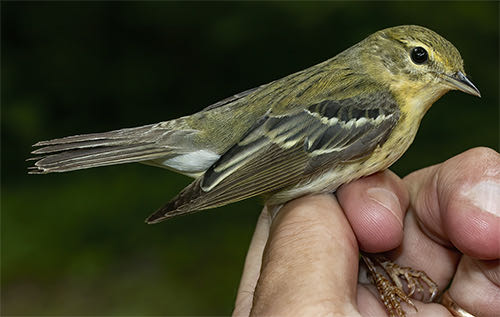

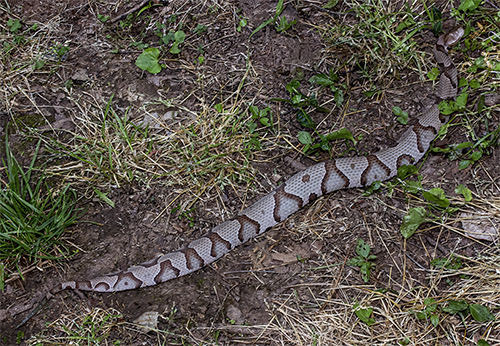

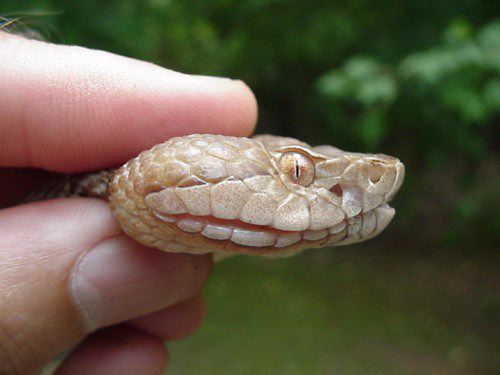
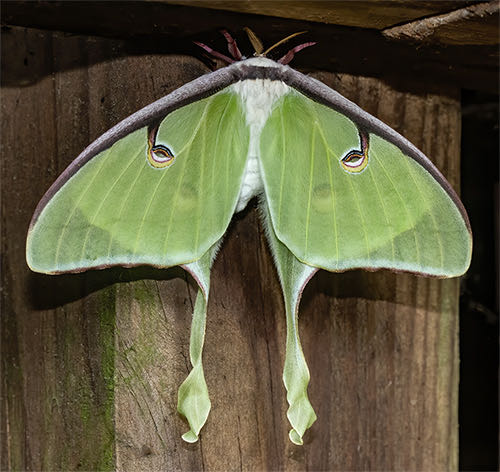

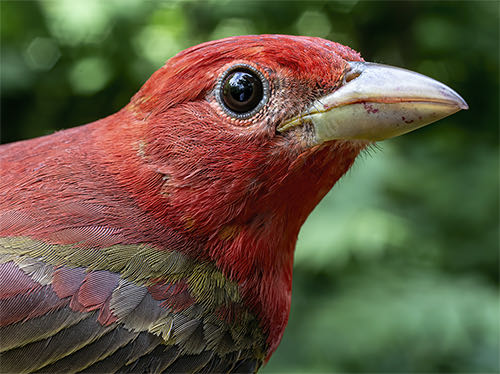
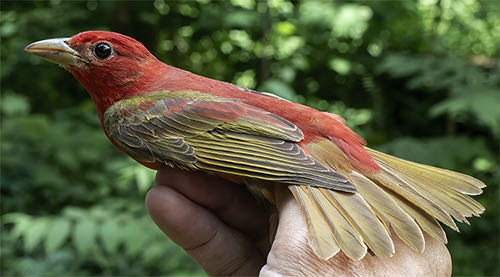
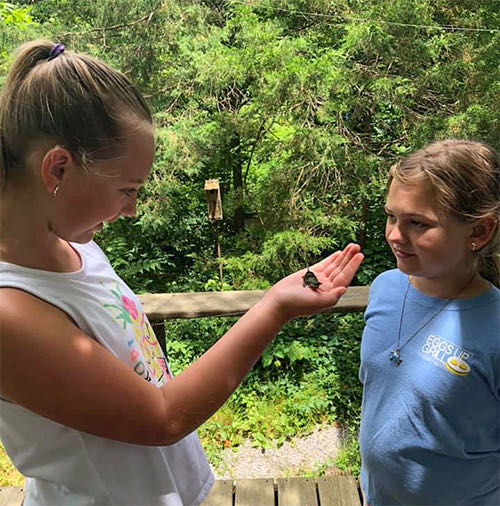
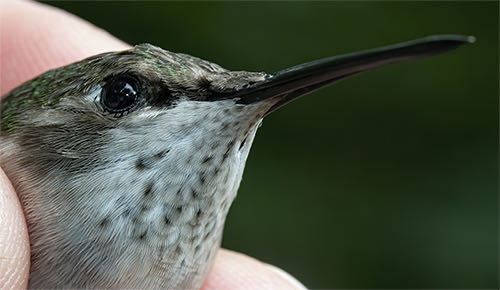

 has served annually as guide, lecturer, and bird bander. Because the Festival was virtual in 2021, on 1 May Hilton participated remotely by conducting a "Facebook Live" birding and banding session from his home base in York SC. We've uploaded an extended podcast of this
has served annually as guide, lecturer, and bird bander. Because the Festival was virtual in 2021, on 1 May Hilton participated remotely by conducting a "Facebook Live" birding and banding session from his home base in York SC. We've uploaded an extended podcast of this 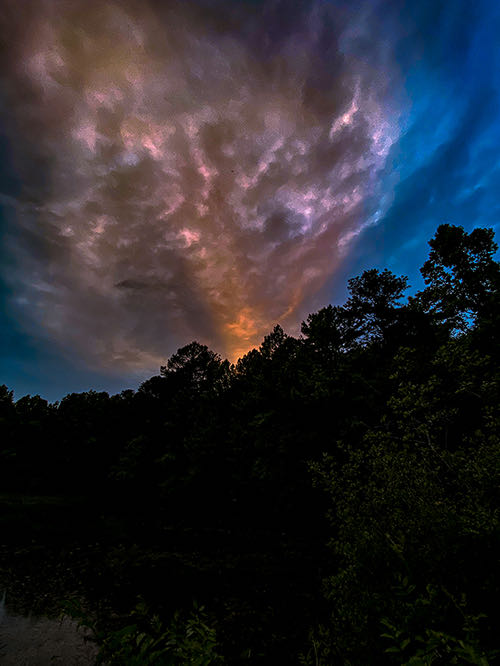










 Please report your spring, summer &
Please report your spring, summer &